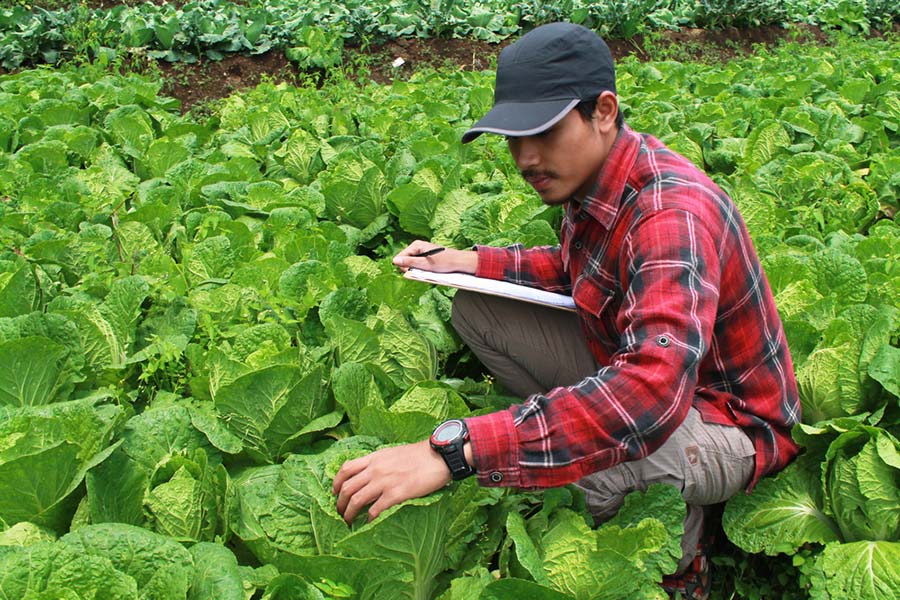Oregon’s minimum wage law is detrimental to family farms and local sustainable food movement.
As a full-time hog farmer in Washington County, I am concerned about the impact of Oregon’s new minimum wage law on the future of my small family farm and the ramifications for local food in general.
Don’t get me wrong: I’m in favor of living wage jobs for everyone, including myself and my employees. The problem is, the money for a higher minimum wage has to come from somewhere and the cost multiplies when minimum wage jobs are interspersed throughout the supply chain.
My farm participates in the ag-to-food service supply chain that starts with local farmers selling inputs to me and then I use those inputs to raise pigs and sell pork to restaurants.
Every step in the chain relies on minimum wage labor and these costs accumulate on the restaurant menu. The ag-to-food service supply chain doesn’t have profit margins that can simply absorb wage increases. Menu prices will have to go up, but will they go up enough to cover all the cost increases in the supply chain? Will consumers eat out less often or start eating at cheaper venues, causing a drop in demand?
 If you haven’t looked at the full scope of the recent minimum wage legislation, note that the law specifies annual increases starting on July 1st of this year and every July for at least the next 7 years.
If you haven’t looked at the full scope of the recent minimum wage legislation, note that the law specifies annual increases starting on July 1st of this year and every July for at least the next 7 years.
By 2022, my farm labor costs (outside the urban growth boundary) are scheduled to rise by 45.9% and the minimum wage in Portland metro will increase by 59.5%. Thereafter, wages are tied to the consumer price index (which historically has increased prices 1.5% – 3% per year). Translation: annual wage hikes are the new normal.
In talking to my suppliers and restaurant customers, the general consensus is that the eminent 5.4% increase will be absorbed this year without price increases. The first real challenge will be the 15.4% minimum wage hike that will take effect in July of 2017 for Portland metro businesses. By that time, the farmers will have experienced a 10.5% labor cost increase as well as additional input cost increases.
This cost will have to be pushed onto the restaurants and they will be facing their own 15.4% wage increase plus the effects of the new 2016 federal overtime regulations, whereby most salaried restaurant managers who are exempt from overtime today will have to be paid time-and-a-half. Menu prices will go up, but then what?
Basic economic theory predicts a drop in demand when prices increase. Some buyers will seek out lower priced restaurants, others will eat out less frequently. There may not be enough demand to support all of the high-end restaurants in town, causing some to close.
My fear is this: if menu prices don’t increase enough or consumer demand drops, then the restaurants won’t have much choice except to react with lower menu prices to stimulate demand. The restaurants’ fixed costs won’t go down and reducing labor won’t be an option: cost savings will have to occur by sourcing cheaper ingredients.
The three big expenses in hog farming are feed, labor, and weaner pigs. If the restaurants tell me that I have to hold my prices constant, I’ll be faced with closing my business, subsidizing it with off-farm income, or abandoning my values of animal welfare and earth stewardship in order to compete with the lower priced pork from confinement operations. All three options are bad.
It’s true that through all of this, those minimum wage workers who remain employed will be better off. It’s also true that some will lose their jobs over this as restaurants, farmers, and suppliers consolidate and fail.
Personally, I’m not happy about people losing their jobs, but what troubles me the most is that the pigs will bear the brunt of it. Demand for low cost confinement pork (what I call “misery pork”) will rise and pigs deserve better than that. As the saying goes, there’s no free lunch.



